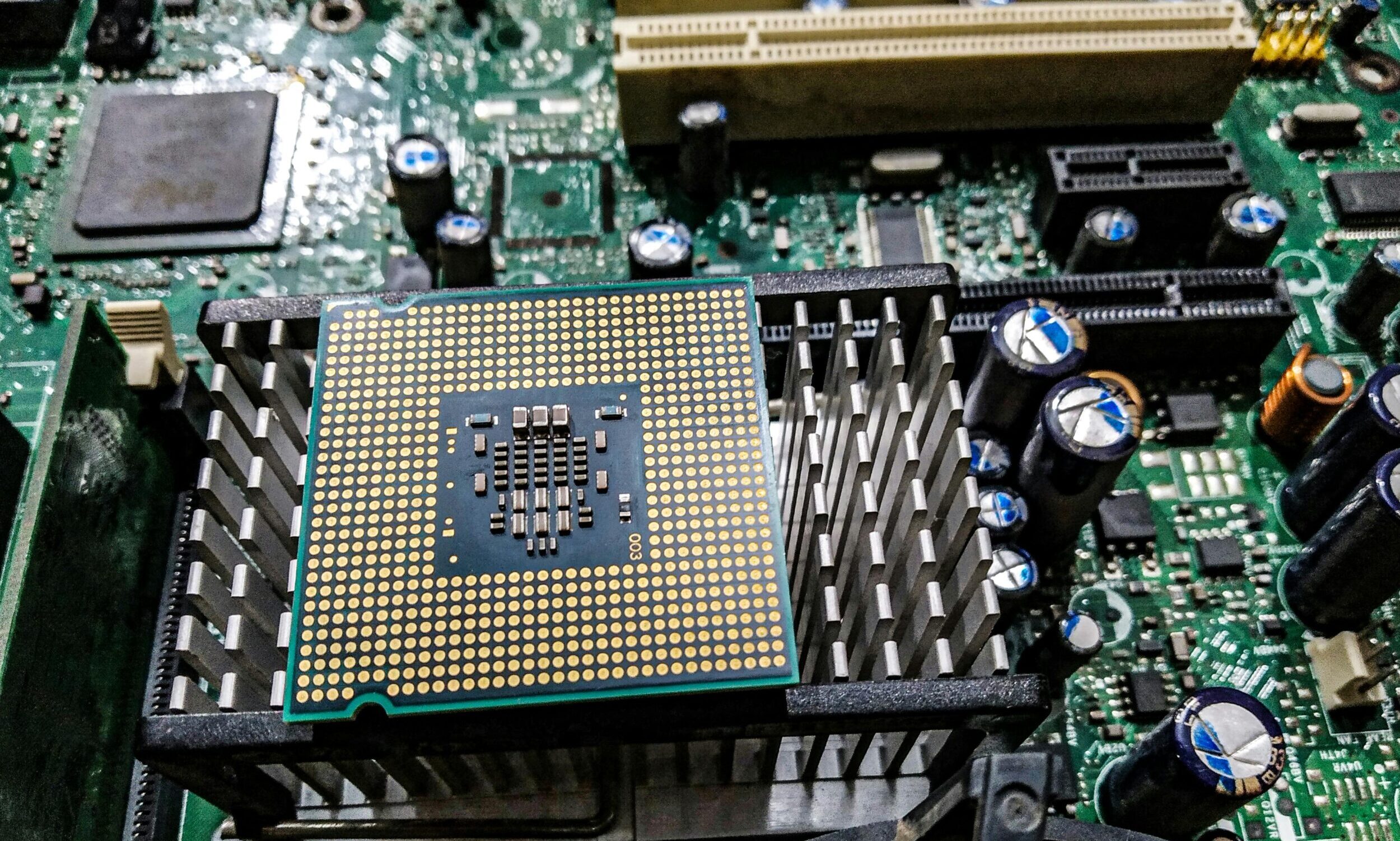Semiconductors are materials that have electrical conductivity between that of conductors (like metals) and insulators (like glass). This unique property arises due to their energy band structure, specifically the presence of a small energy gap (bandgap) between the valence band (where electrons are bound to atoms) and the conduction band (where electrons can move freely and conduct electricity).
- Bandgap Energy (Eg): The energy difference between the valence and conduction bands. For semiconductors, this is typically in the range of 0.1 eV to 3 eV. For comparison:
- Insulators: Eg > 5 eV (e.g., diamond, Eg ≈ 5.5 eV)
- Conductors: No bandgap (valence and conduction bands overlap)
- Semiconductors: Eg ≈ 0.1–3 eV (e.g., silicon, Eg ≈ 1.12 eV; gallium arsenide, Eg ≈ 1.43 eV)
Key Characteristics and Properties:
Semiconductors can be manipulated to control their conductivity by:
- Conductivity Range (10⁻⁶ to 10⁴ S/m):
- Unlike metals, which have high conductivity (~10⁷ S/m), and insulators, which have negligible conductivity (<10⁻¹⁰ S/m), semiconductors offer tunable conductivity.
- Band Gap:
- Semiconductors have an energy gap (Eg) between the valence band and conduction band. Common semiconductors like silicon (Si) and germanium (Ge) have band gaps of 1.1 eV and 0.66 eV, respectively.
- Negative Temperature Coefficient of Resistance:
- As temperature increases, more electrons gain enough energy to jump the band gap, increasing conductivity (unlike metals, where resistance increases with temperature due to lattice vibrations).Unlike metals, the resistivity of semiconductors decreases with an increase in temperature due to higher carrier generation.
- Doping Sensitivity:
- Introducing impurities (dopants) can drastically alter conductivity by orders of magnitude, enabling the creation of n-type (electron-rich) and p-type (hole-rich) semiconductors.The addition of impurities significantly alters the electrical properties, enabling their use in electronic devices.
Types of Semiconductors : Intrinsic and Extrinsic Semiconductors
Semiconductors can be classified into two main types based on their purity and doping:
Intrinsic Semiconductors:
- Pure semiconductors with no impurities.
- Conductivity depends on the thermal generation of electron-hole pairs. At absolute zero (0 K), intrinsic semiconductors act as insulators because no electrons are in the conduction band. As temperature increases, electrons gain enough energy to jump from the valence band to the conduction band, leaving behind a “hole” (a vacancy that behaves like a positive charge carrier).
- Example: Pure silicon (Si) or germanium (Ge).
- Carrier concentration (electrons and holes) is equal: ( n = p = n_i ), where ( n_i ) is the intrinsic carrier concentration, which depends on temperature and bandgap.
Extrinsic Semiconductors:
- Semiconductors doped with impurities to enhance conductivity.
- N-type Semiconductors: Doped with elements that have more valence electrons than the host material (e.g., phosphorus in silicon). Phosphorus has 5 valence electrons, while silicon has 4, so the extra electron becomes a free charge carrier in the conduction band.
- P-type Semiconductors: Doped with elements that have fewer valence electrons (e.g., boron in silicon). Boron has 3 valence electrons, creating a “hole” in the valence band as it accepts an electron from a neighboring silicon atom.
- Extrinsic semiconductors dominate modern electronics because their carrier concentration can be precisely controlled.
Physics of Semiconductors
The behaviour of semiconductors is governed by quantum mechanics and solid-state physics. Key concepts include:
Energy Band Theory:
- Electrons in a solid occupy energy bands. The valence band is filled with electrons, while the conduction band is empty in an intrinsic semiconductor at 0 K.
- The Fermi level (( E_F )) lies between the valence and conduction bands in intrinsic semiconductors. In extrinsic semiconductors, doping shifts the Fermi level closer to the conduction band (N-type) or valence band (P-type).
Charge Carriers:
- Electrons (negative charge) and holes (positive charge) are the primary charge carriers.
- Mobility (( \mu )): The ease with which carriers move under an electric field. Electrons typically have higher mobility than holes due to their smaller effective mass.
Carrier Generation and Recombination:
- Generation: Electrons are excited from the valence band to the conduction band (e.g., by heat or light), creating electron-hole pairs.
- Recombination: Electrons fall back to the valence band, annihilating a hole. This process can release energy as light (in direct bandgap materials like GaAs) or heat (in indirect bandgap materials like Si).
Drift and Diffusion:
- Drift: Movement of carriers due to an electric field.
- Diffusion: Movement of carriers due to a concentration gradient.
Semiconductor Materials
Semiconductors are typically made from elements in Group IV of the periodic table or compounds from Groups III-V or II-VI.
Elemental Semiconductors:
- Silicon (Si): The most widely used semiconductor due to its abundance, stability, and ability to form a high-quality oxide layer (SiO₂) for insulation.
- Germanium (Ge): Used in early transistors, now less common but still used in high-speed applications.
Compound Semiconductors:
- Gallium Arsenide (GaAs): A III-V compound with a direct bandgap, used in high-frequency and optoelectronic devices (e.g., LEDs, lasers).
- Indium Phosphide (InP): Used in high-speed electronics and photonics.
- Silicon Carbide (SiC) and Gallium Nitride (GaN): Wide-bandgap semiconductors (Eg > 3 eV) used in high-power, high-temperature applications (e.g., electric vehicles, power electronics).
Emerging Materials:
- Perovskites: Used in solar cells due to their high efficiency and low cost.
- Graphene: Ultra-high mobility (200,000 cm²/Vs) but lacks bandgap.
- Transition Metal Dichalcogenides (MoS₂):
- 2D semiconductors with tunable bandgaps for flexible electronics. Graphene, transition metal dichalcogenides (e.g., MoS₂) for ultra-thin, flexible electronics.
Semiconductor Devices
Semiconductors are the backbone of modern electronics. Key devices include:
Diodes
- A p-n junction that allows current to flow in one direction only.
- Applications: Rectifiers, LEDs, photodiodes, solar cells.
- Example: In a solar cell, light generates electron-hole pairs, which are separated by the p-n junction to produce a voltage.
Transistors:
- Bipolar Junction Transistor (BJT): Uses both electrons and holes for current flow. Used in amplifiers and switches.
- Field-Effect Transistor (FET): Controls current with an electric field. MOSFETs (Metal-Oxide-Semiconductor FETs) are the most common, used in microprocessors and memory.
- Transistors are the building blocks of integrated circuits (ICs).
Integrated Circuits (ICs):
- Millions to billions of transistors on a single chip.
- Moore’s Law: The number of transistors on a chip doubles approximately every two years, though this trend is slowing due to physical limits (e.g., quantum tunneling at nanoscale dimensions).
Optoelectronic Devices:
- LEDs and Lasers: Use direct bandgap semiconductors (e.g., GaAs) to emit light.
- Photodetectors: Convert light into electrical signals (e.g., in cameras, fiber-optic communication).
Fabrication of Semiconductors
Semiconductor devices are manufactured using advanced processes:
Crystal Growth:
- Czochralski Process: Used to grow single-crystal silicon ingots.
- Epitaxy: Deposition of a crystalline layer on a substrate (e.g., molecular beam epitaxy for compound semiconductors).
Doping:
- Diffusion or ion implantation to introduce impurities.
Lithography:
- Photolithography: Patterns are created on the semiconductor surface using light and photoresist.
- Extreme Ultraviolet (EUV) Lithography: Used for sub-5 nm nodes in modern chips.
Etching and Deposition:
- Etching: Removes material to create patterns (e.g., reactive ion etching).
- Deposition: Adds thin films (e.g., chemical vapor deposition for SiO₂).
Packaging:
- The final chip is encapsulated for protection and connected to external circuits.
Applications of Semiconductors
Semiconductors are ubiquitous in modern technology:
- Computing: CPUs, GPUs, memory (DRAM, NAND flash).
- Communications: RF transistors, optical transceivers for 5G and fiber optics.
- Energy: Solar cells, power electronics for renewable energy systems.
- Automotive: Sensors, power management in electric vehicles.
- Healthcare: Imaging devices (e.g., X-ray detectors), biosensors.
- Consumer Electronics: Smartphones, TVs, wearables.
Recent Advancements and Challenges
- Miniaturization:
- Transistor sizes have shrunk to 2 nm (as of 2025), but further scaling is limited by quantum effects like tunneling and heat dissipation.
- Solutions: 3D chip stacking (e.g., chiplets), new architectures like FinFETs and gate-all-around (GAA) transistors.
- Wide-Bandgap Semiconductors:
- SiC and GaN are replacing silicon in high-power applications due to their higher efficiency and thermal stability.
- Quantum Computing:
- Semiconductors (e.g., silicon quantum dots, GaAs-based qubits) are being explored for quantum bits (qubits).
- Sustainability:
- Semiconductor manufacturing is energy-intensive and produces greenhouse gases (e.g., from perfluorocarbons). Efforts are underway to make the industry more sustainable, such as using renewable energy in fabs.
- AI and Machine Learning:
- Specialized chips (e.g., TPUs, neuromorphic chips) are being developed to handle AI workloads more efficiently.
. Future Directions
- Beyond Silicon: Materials like graphene, carbon nanotubes, and 2D materials may replace silicon for certain applications.
- Neuromorphic Computing: Mimicking the human brain using semiconductor devices for energy-efficient AI.
- Photonics Integration: Combining optical and electronic components on the same chip for faster data transfer.
- Sustainability: Developing recyclable semiconductors and reducing the environmental impact of manufacturing.
- Beyond Moore’s Law:
- 3D ICs, Chiplets: Stacked transistors for continued scaling.
- Neuromorphic Computing: Memristors for brain-like chips.
- Quantum Computing:
- Silicon spin qubits, topological quantum materials.
- Energy-Efficient Semiconductors:
- Low-power transistors (Tunnel FETs, Negative Capacitance FETs).
Semiconductors are the foundation of modern technology, enabling everything from smartphones to renewable energy systems. Their unique ability to control electrical conductivity through doping, temperature, and external fields has revolutionized electronics. As we push the limits of physics with smaller, more efficient devices, the future of semiconductors lies in new materials, innovative architectures, and sustainable practices. Understanding their properties and applications is crucial for anyone interested in technology and its impact on society.
References for Further Study:
- Streetman & Banerjee – Solid State Electronic Devices (7th Ed.)
- Sze & Ng – Physics of Semiconductor Devices (3rd Ed.)
- Jaeger & Blalock – Microelectronic Circuit Design















